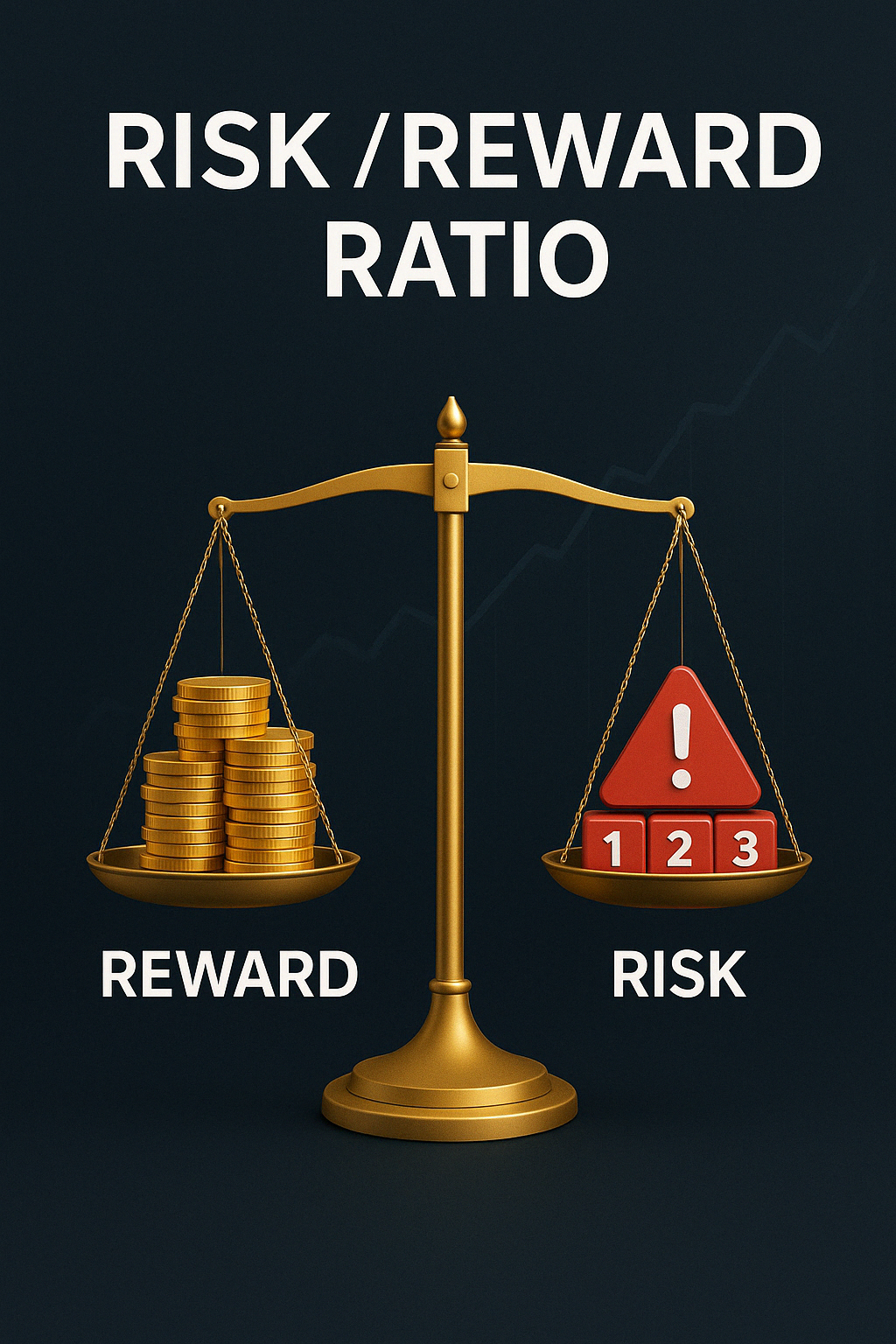Mastering the Risk/Reward Ratio

What is the Risk/Reward Ratio?
The risk/reward ratio is a fundamental concept in trading that compares the potential loss (risk) to the potential gain (reward) of a trade. It's typically expressed as a ratio, such as 1:2 or 1:3, where the first number represents your risk and the second number represents your reward.
For example, a risk/reward ratio of 1:3 means that for every dollar you risk, you aim to make three dollars in profit. This simple metric serves as a powerful tool for making informed trading decisions and managing your overall trading psychology.
Why Risk/Reward Ratio Matters
Understanding and properly implementing risk/reward analysis is crucial for several reasons:
- Profitability Over Time - Even with a win rate below 50%, a favorable risk/reward ratio can result in overall profitability
- Emotional Management - Clear risk parameters help control fear and greed during active trades
- Trade Selection - Analyzing setups through a risk/reward lens improves trade quality and reduces impulsive decisions
- Capital Preservation - Proper risk assessment helps prevent catastrophic losses that can end a trading career
- Psychological Resilience - Understanding your long-term edge despite short-term losses keeps you mentally stable
The Mathematics of Risk/Reward
The power of a positive risk/reward ratio becomes clear when you examine the math behind it. For instance:
- With a 1:2 risk/reward ratio, you only need to win 34% of your trades to break even
- With a 1:3 risk/reward ratio, you only need to win 25% of your trades to break even
- With a 1:4 risk/reward ratio, you only need to win 20% of your trades to break even
This mathematical edge is why professional traders obsess over their risk/reward ratios. It provides a buffer against the inevitable losing streaks that all traders experience while ensuring long-term profitability.
Psychological Barriers to Proper Risk/Reward
Despite its mathematical simplicity, many traders struggle to implement proper risk/reward practices due to psychological factors:
1. Loss Aversion
Humans typically feel the pain of losses much more intensely than the pleasure of equivalent gains. This evolutionary bias can cause traders to:
- Take profits too early, reducing the reward side of the equation
- Move stop losses further away to avoid small losses, increasing the risk side
- Hesitate to enter trades with proper risk parameters due to fear of loss
2. The Need for High Win Rates
Many traders mistakenly focus on achieving a high percentage of winning trades rather than maximizing their risk/reward ratio. This can lead to:
- Taking many small profits while risking larger amounts
- Avoiding trades with excellent risk/reward but lower probability
- Psychological distress during necessary losing streaks
3. Inconsistent Position Sizing
Emotional trading often leads to inconsistent position sizing, with traders:
- Increasing position sizes after losses to "make back" money
- Taking outsized positions on "sure things"
- Reducing position sizes on trades with excellent risk/reward due to recent losses
How to Implement Effective Risk/Reward Practices
Overcoming the psychological barriers to proper risk/reward implementation requires both technical discipline and emotional awareness:
1. Pre-Define Entry, Stop Loss, and Target Levels
Before entering any trade, clearly identify:
- Your precise entry point
- Where your stop loss will be placed based on technical invalidation
- Your profit target based on likely price movement
- The resulting risk/reward ratio
Only proceed with trades that meet your minimum risk/reward threshold (typically at least 1:2).
2. Use Position Sizing Formulas
Calculate position sizes based on how much of your account you're willing to risk per trade:
- Determine your maximum risk per trade (typically 1-2% of your account)
- Calculate your position size based on your stop loss distance
- Adjust position sizes based on the quality of the setup, not on recent results
3. Maintain Trading Statistics
Track and analyze your trading performance:
- Record the risk/reward ratio for every trade
- Calculate your average risk/reward ratio over time
- Monitor your win rate in conjunction with your risk/reward ratio
- Identify patterns where you deviate from your risk management rules
4. Develop a "Set and Forget" Mindset
Once you've established your entry, stop loss, and target based on a solid risk/reward analysis:
- Consider using limit orders and stop orders to automate the process
- Avoid watching the trade constantly, which can trigger emotional decisions
- Trust your pre-trade analysis rather than reacting to every price movement
Advanced Risk/Reward Concepts
1. Adjusting Risk/Reward for Market Conditions
Different market conditions may require adaptations to your risk/reward approach:
- In trending markets, larger targets may be appropriate
- In choppy or range-bound markets, tighter targets may make sense
- Volatility should influence both your stop placement and target expectations
2. Partial Profit Taking
Some traders implement strategies to secure profits while still allowing for larger gains:
- Taking partial profits at predetermined levels
- Moving stops to breakeven after reaching certain profit thresholds
- Trailing stops to lock in profit while allowing for extended price movements
These approaches, when properly implemented, can maintain a positive risk/reward profile while addressing the psychological need for profit security.
Conclusion
Mastering the risk/reward ratio is essential for both the technical and psychological aspects of trading. By understanding the mathematics behind risk/reward and implementing consistent risk management practices, traders can overcome the emotional biases that often lead to poor decision-making.
Remember that a favorable risk/reward ratio provides a mathematical edge that can lead to profitability even with a moderate win rate. This understanding helps develop the patience and discipline necessary for long-term trading success.
Like many aspects of trading psychology, proper risk/reward implementation requires ongoing awareness and practice. By continually refining your approach and monitoring your adherence to solid risk management principles, you'll develop both the skills and mindset needed to succeed in the challenging world of trading.